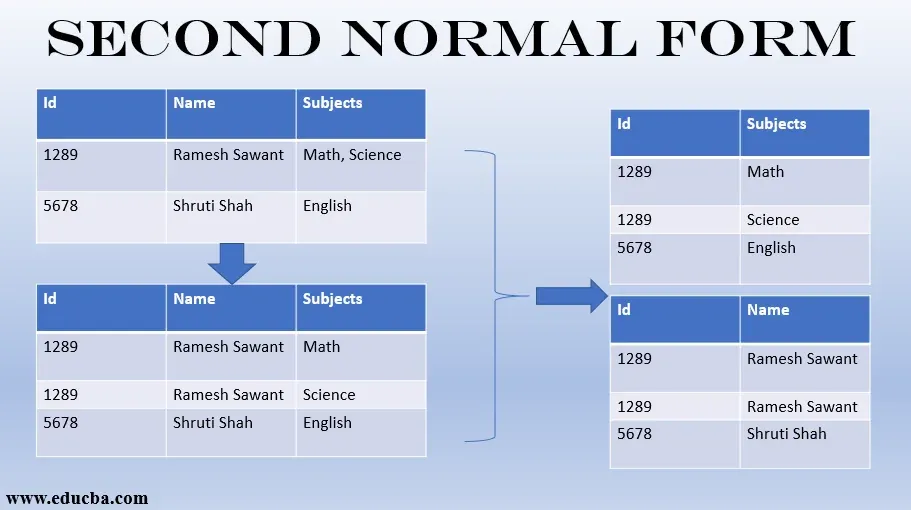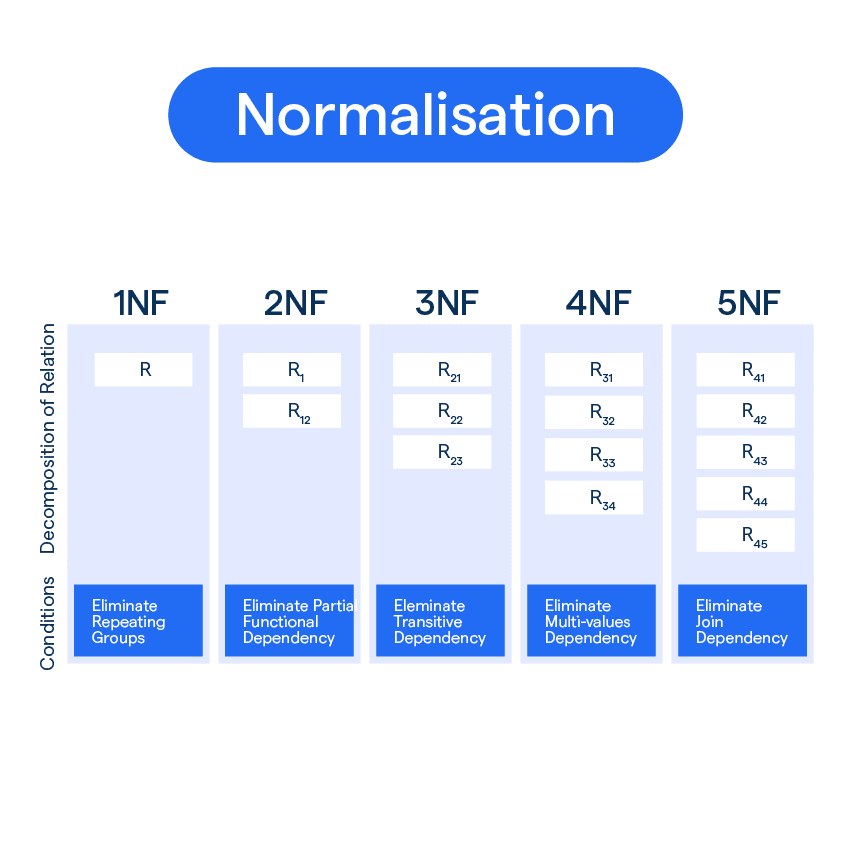What is Normalisation?
Normalisation is the process of organizing data in a database by breaking it down into smaller, more manageable chunks. The goal is to eliminate redundancy and ensure data integrity.
Purpose of Normalisation: The purpose of normalisation is not just to make your database look neat and tidy (although that's a nice bonus). It's to ensure that your database is efficient, scalable, and easy to maintain.
By normalising your database, you can enjoy a multitude of benefits.
- It improves data integrity by reducing the chances of data inconsistencies.
- It also minimizes data redundancy, which not only saves storage space but also makes data updates easier.
- Additionally, normalisation improves query performance, making it faster to retrieve and manipulate data.
Why is Normalisation Important?
In this section, we'll delve into the importance of normalization in Database Management Systems (DBMS) and how it impacts database efficiency and integrity.
Elimination of Redundant Data
Normalisation processes help in the elimination of redundant or duplicate data from a database. This not only saves storage but also ensures accuracy and consistency of data.
Minimization of Modification Anomalies
Normalisation simplifies the database design, which results in minimized modification anomalies. It becomes easier to insert, delete, or update records in a normalized database.
Improved Data Integrity

By ensuring that each piece of data is stored in one place, normalisation enhances data integrity. It reduces the chances of conflicting information in the database.
Efficient Data Retrieval
Normalized databases have efficient data retrieval mechanisms due to their compact structure. Queries run faster and with less computational resource utilization.
Simplified Database Design
Normalization aids in restructuring the database in sync with logical relationships among the different entities. This simplifies the design and makes it more understandable and easier to work with.
Flexibility for Future Modifications
A normalized design is more fluid and can adapt to future changes or expansions. This flexibility is crucial as business needs and demands evolve over time.
When to Apply Normalisation?
In this section, we'll be diving into when and why it makes sense to apply Normalisation in data handling.
- Enhanced Data Consistency: Normalisation allows for greater data consistency across your databases. If you're grappling with issues where inconsistent data leads to problems while processing, analysing, or reporting, Normalisation can help considerably.
- Dealing with Redundancies: When the same piece of data is stored in multiple places, it can create data redundancies. Normalisation is a great way to eliminate these redundancies and keep your databases clean and efficient.
- Achieving Efficient Storage: Normalisation can help you optimise your data for efficient storage. In cases where you're dealing with vast volumes of data and a lack of storage is a pressing concern, Normalisation can come to your rescue.
- Proactive Error Reduction: Normalisation can be critical when you need to reduce errors that could occur due to data duplication. By ensuring that each piece of data is stored exactly once, you eliminate the possibility of conflicting information.
- Simplifying Database Design: If you're tasked with handling complex databases where managing relationships between tables gets tricky, Normalisation can be instrumental. It simplifies your database design and makes it much easier to understand and manage.
How to Implement Normalization in DBMS?

In this section, we'll cover the step-by-step process of implementing normalization in Database Management Systems (DBMS), walking through the normalization forms from the first (1NF) to the fifth (5NF).
Normal forms serve to classify how well a database schema deals with logical consistency and structure. Implementing these forms helps to minimize data redundancy and maintain data integrity.
The First Normal Form (1NF)
The first normal form eliminates redundant data in horizontal rows. We ensure that there is a primary key and no repeating groups or arrays, i.e., every column contains only atomic (indivisible) values.
Applying 1NF involves breaking down larger tables into smaller entities and defining primary keys for unique identification. Every attribute should contain only atomic values to be in 1NF.
The Second Normal Form (2NF)

2NF is achieved when your table is in 1NF and all non-prime attributes are fully dependent on the primary key. In other words, it eliminates partial dependencies.
To accomplish 2NF, you need to extract subsets of data that apply to multiple rows, and place them into distinct tables. Make sure there isn't any partial dependency of any attribute on the primary key.
The Third Normal Form (3NF)
3NF is mainly concerned with eliminating transitive dependencies from a table, i.e., if X depends on Y and Y depends on Z, then X is transitively dependent on Z.
For 3NF, create separate tables for sets of values that relate to a specific entity. Remove columns that are not dependent upon the primary key, thereby ensuring that only direct dependencies remain.
Boyce-Codd Normal Form (BCNF)
Becoming a tad more complex, BCNF comes to play when there are multiple candidate keys in a table. It ensures that every determinant is a candidate key.
To implement BCNF, identify and isolate those dependencies where both sides are candidate keys. Then, place these dependencies in a separate table.
Fourth Normal Form (4NF)
4NF concerns itself with data structures containing multiple, overlapping sets of multi-valued facts.
To implement 4NF, you'll need to identify sets of multi-valued dependencies and separate them into new tables. Then, ensure that no database table instance contains a pair of multi-valued facts that are not directly related.
Fifth Normal Form (5NF)
Known as the "project-join normal form," 5NF is achieved when every join dependency in a table is a consequence of the candidate keys.
Applying 5NF involves assessing your table structures for join dependencies that aren't a result of the candidate keys. Such dependencies should be resolved by splitting the table into two.
Frequently Asked Questions (FAQs)
What is Normalization in DBMS?
Normalization in DBMS is a systematic approach to efficiently organize data in a database by eliminating redundancy and ensuring data dependencies make sense.
Why is Normalization Important?
Normalization is vital because it prevents data redundancy, conserves storage and enhances retrieval efficiency, ensuring data consistency within the database.
What are the Levels of Normalization?
There are several levels of Normalization, commonly referred to as normal forms, including 1NF, 2NF, 3NF, BCNF, 4NF, and 5NF.
What is Denormalization?
Denormalization is the process of combining tables in a database to improve read performance, which is the opposite process of Normalization.
When Should I Use Normalization?
You should use Normalization when you want to reduce data redundancy, improve data integrity, and simplify enforcing referential integrity constraints.



